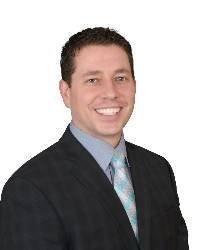By Jon Pressett, M.D., FACS – Castleview Hospital
What is a hernia?
Men, women, and children of all ages can have hernias. An abdominal hernia is a protrusion of what is normally contained within the abdomen through the abdominal wall to a space it should not be in. Hernias can occur in many places but are often found in the weak areas of the abdominal wall such as the umbilicus, groin, or diaphragm. Sometimes people refer to hernias as a “rupture”.
Why do we have hernias?
Acquired hernias are the most common. They are a result of wear and tear over the years. They may also be from medications, trauma, previous surgery, or other conditions that may weaken the tissues. Congenital hernias are present at birth but may not be apparent for many years.
What are symptoms of a hernia?
Abdominal wall hernias may show up with a variety of symptoms; often a person will notice a bulge or swelling, others may experience sharp severe pain or a dull ache. Pain is often a result of strenuous activity like lifting or even a cough. You may notice increasing pain later in the day after standing for a long time. Though it may happen, most hernias do not cause bowel obstruction or bowel strangulation initially. These are severe complications of a hernia but are not common. A bowel obstruction results in abdominal pain, bloating, nausea and vomiting. If contents of a hernia become strangulated, the blood supply is cut off and the herniated tissues will die if blood supply is not restored by reducing or repairing the hernia soon enough.
What should you do with a hernia?
If you think you have a hernia, it is important to have it evaluated by your doctor. This is the first step to diagnosis. You may require additional studies to further evaluate your condition and to help best determine what treatment should be given. Hernias may repair on their own in infancy but they do not go away on their own in adolescence or adulthood. Not all hernias should be fixed. Consideration should be given to details about where the hernia is, symptoms or complications it may be causing, options for surgical repair, and the risk surgery might impose to the individual patient.
How are hernias treated?
There are different options of repair for different types of hernias. In general, most abdominal hernias can be repaired laparoscopically with several small incisions, this is also called minimally invasive surgery. The other option is called an open repair with an incision typically directly over the hernia. Both surgeries aim to repair the hernia and keep it from coming back. Laparoscopic surgery is often associated with a lower chance of hernias recurring as well as an earlier return to normal activity and less associated pain. Laparoscopic surgery also allows the surgeon to repair multiple hernias without additional incisions. Specific risks and benefits are associated with each hernia surgery and should be discussed with your surgeon at the time of evaluation.
Dr. Pressett always knew that the wanted to be a physician and his education in Carbon County was the perfect start. He traveled to medical school in Saint Eustatius before moving back to Utah to complete the 3rd and 4th years of clinical rotations. Residency and fellowship took him and his family to the University of Massachusetts in Worcester. There Dr. Pressett completed general surgery residency followed by a fellowship in minimally invasive and bariatric surgery.
Planning a surgery can be stressful, and finding the right surgeon can be a tough process. Dr. Pressett takes pride in lending his patients a helping hand along the way. Our team of highly trained professionals is devoted to making patient care our first priority. If you are experiencing any of these symptoms call your Dr. Pressett at 435-637-4590.


